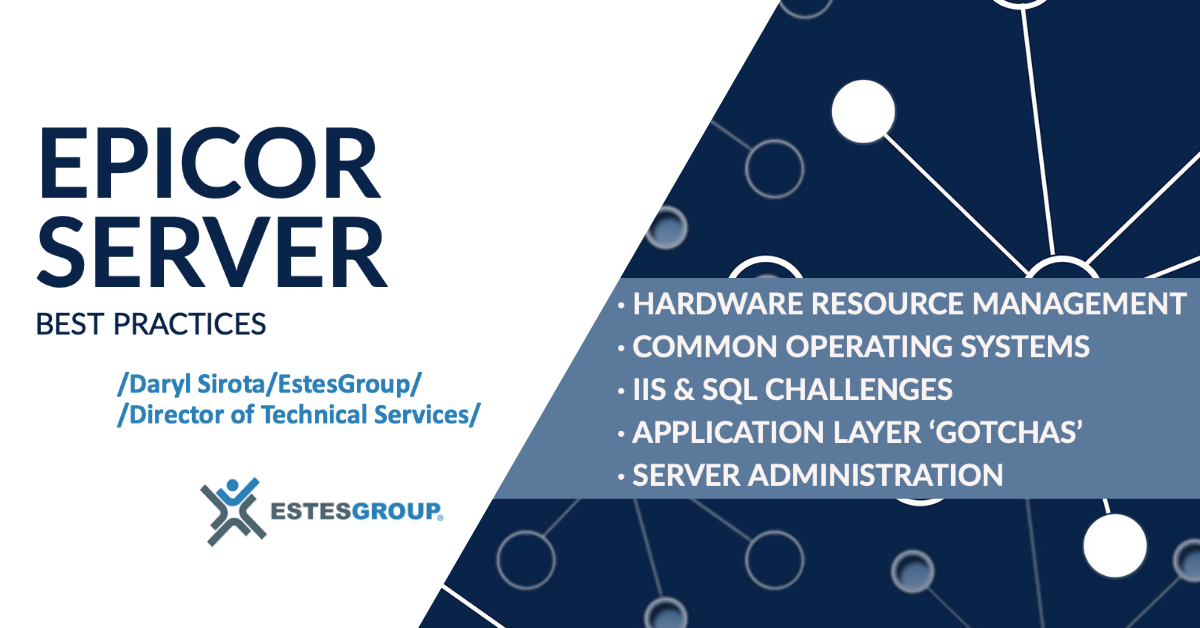
Prophet 21 Event: Servers, Financials & Supply Chains
With summer in full swing, distributors are on the move, crossing docks, splitting shipments, and delivering goods by the truckload to a diverse array of customers. It is a time for expansion—of old trade routes of supply chains and of new opportunities as our reopening country rediscovers its possibilities.

Attend a 2021 Prophet 21 event in person or online
With user conferences back in the schedule for 2021, P21 users are highly anticipating the Prophet 21 user conference P21WWUG CONNECT in mid-August. This event serves as a focal point for the P21 user community and as a bookend for a busy summer. At the onset of the summer season, we thought it would be helpful to host our P21 summer summit as a prelude to the larger Prophet 21 community event. This also gives you the opportunity to open the summer with some new ideas for using your P21 application to its fullest capabilities.
Events like this are a great opportunity to review your application’s capabilities and find ways to improve internal processes, discover ways to reduce costs, and reveal methods to improve information flow and presentation. You’ll also surface steps you can take to better integrate Prophet 21 with suppliers and customers.
Our summer 2021 Prophet 21® event takes place on June 24, from 10:00 AM to 1:30 PM (Central Time). Three panelists will discuss topics pertinent to the P21® user community. The event is free, and all are welcome! This summit will also provide an insider’s view of the Epicor Prophet 21® solution for any distributor who is looking for growth opportunities that only a new software can provide.
Prophet 21 Event Itinerary
Server Best Practices for the Epicor P21 Environment
10 AM – 11 AM (CST)
Daryl Sirota, Executive Director of Technical Services at EstesGroup, will discuss server best practices for P21. Understanding the optimal means for deploying the Prophet 21 application has never been more important, especially with Epicor’s move to a new client-server architecture. Daryl will discuss some of the key considerations when deploying and maintaining your server stack. Daryl leverages 35+ years of IT experience to help customers develop server and cloud architectures that are robust, flexible and reliable. A veteran systems engineer and Microsoft expert, Daryl provides the stable technical foundations that allow customers to focus on their business. Attend this Prophet 21 event if you’d like to know how to create a private cloud for your ERP software.
Creating Financial Statements Using Financial Line Express
11 AM – Noon (CST)
Terri Gage, Senior Consultant at EstesGroup, will discuss the creation of Financial Statements. P21 customers express frustration in successfully creating financial statements, but the often forgotten Financial Line Express can bring ample help to your financial reporting needs. A longtime project manager, implementation consultant, and Prophet 21 specialist, Terri works with organizations to help them successfully implement and fully benefit from the P21 application, actualizing their goals of sustained profitability and business excellence.
Bridging the Gap Between Epicor and Suppliers for Distribution Companies
12:00 PM – 1:00 PM (CST)
Jim Frye, Enterprise Sales Director at SourceDay, will discuss how distribution companies bridge the gap between their Prophet 21 system and their supply chains. Distributors need to do many things to help secure their supply chains as the ground shifts beneath them, automating the mundane and improving collaboration, visibility, and accountability between them and their varied suppliers. Jim leverages 30+ years of experience working with Global Manufacturing Companies, big and small. His passion is to help organizations facilitate growth, reduce operating costs, and increase profitability through supply chain efficiency.
Our event concludes with an open Q&A session, allowing users to raise questions regarding the sessions themselves and the Prophet 21 application in general. Operations management strategies. Cloud server integration steps. Cloud hosting service risks. Prophet 21 cloud platform options. Global supply chain trends. Operation system updates. Dedicated servers, multiple servers, SaaS… from Prophet 21 consulting to server hosting, we have answers to your P21 ERP and IT questions.
Do you have questions you’ve been meaning to ask a consultant, but haven’t wanted to shell out the cash?
Now is your chance to do it–on our time and our dime!
Epicor’s Prophet 21 user community is founded on collaboration.
Come collaborate with us on June 24.
This event can also help distributors who are considering a new enterprise resource planning (ERP) software.











